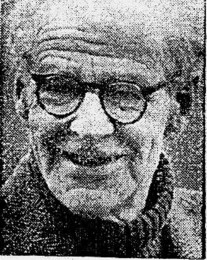
Happy Christmas to everyone, time to slow down and enjoy
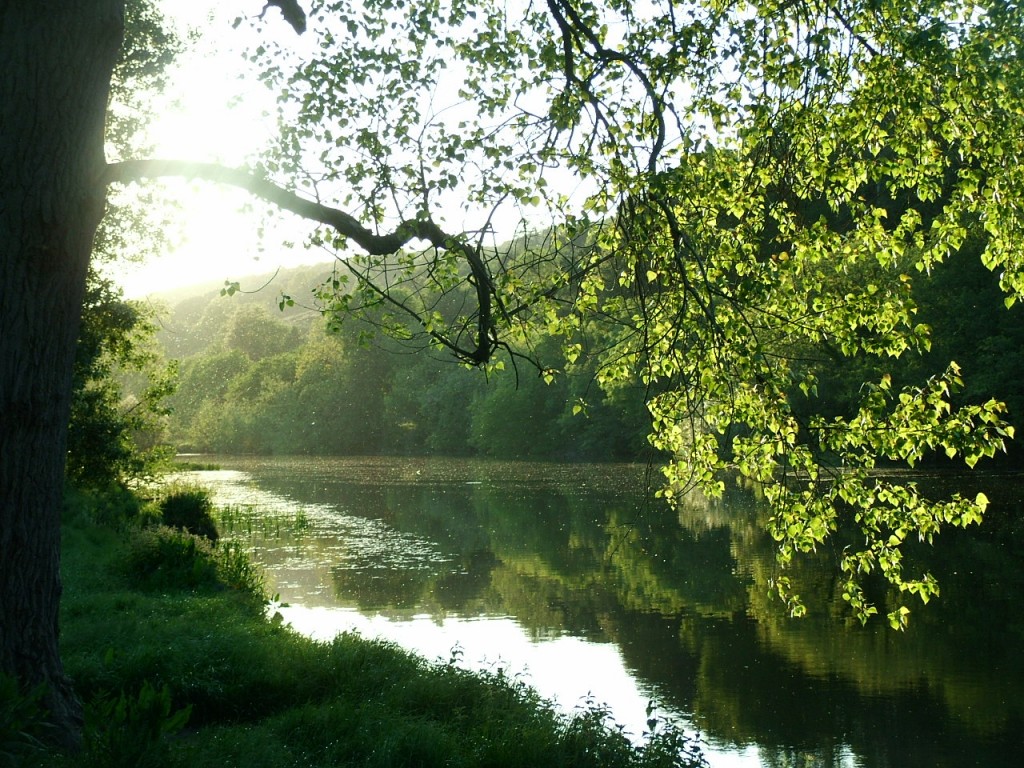
Kieran’s Our City, Our Town Article
Cork Independent, 22 December 2011
In the Footsteps of St. Finbarre (Part 280/280)
The Weir of Destiny
Gougane Barra epitomises many values and traditions of Ireland’s past. Many of these aspects echo throughout the Lee Valley to the beginning of the tidal area of the river at the weir at the Lee Fields. The Lee Fields are an important cross-roads where the River Lee’s natural wilderness and the urban wilderness of the City collide. The contrasts are extensive. One view is of the River Lee and its part of large flood plain, shown regularly when the fields are waterlogged during Ireland’s rainy conditions or when the dam at Inniscarra is forced to release reservoir water.
Different species of flora overhang the river as well as playful bird life dive for fish. The slow current but heavy volume of river water spills over the weir to meet the tidal water. The other view is of Cork’s and Ireland’s most impressive buildings such as the Waterworks, now the Lifetime Lab), the former Our Lady’s Hospital and Cork County Hall. Sites such as the Kingsley Hotel (formerly the site of the Lee Baths) and the new student accommodation are all located within view on the Lee fields and these reveal further insights into the past, present and future pulses of the city.
The weir at the Lee Fields provides a boundary of the River’s fresh water and tidal water. It is here that during all months that the die-hards swim in the Lee, where people walk their dogs, where fitness fanatics jog and stretch to couples discussing the day’s challenges or those who watch the waters flow. It is here that the River Lee splits into two creating a north and south channel, both channels encompass the city centre islands. One can see the northern channel as struggles to carve an initial path for itself whilst the south channel seems to flow on with ease. St. Finbarre’s Cathedral overlooks the southern channel and stands to recall a journey’s end and a beginning for Cork’s Patron Saint.
Standing at the weir and attempting to sum up six years in the Lee Valley is a difficult one. One aspect I feels shines through is that cultural heritage, encompassing history and geography, was not something abstract but was part of a way of life. It has been interesting to view how stories and values have been handed down and how each successive generation has taken it in turn to hold a torch for some element of the past in the present. One aspect for certain is that the more I researched the places within the region or the more doors I knocked on, the more information came to the fore. What is also apparent is that everybody’s view of the world is different. Each person encountered has a unique relationship to the past and present. One recurring aspect is how much the region’s cultural heritage runs metaphorically in “people’s blood”. There was a large amount of people who noted, “my father used to say to me” or “my mother used to say”. That sense of inheritance or the passing down of cultural heritage is important.
From fieldwork and interviews, local people focused in on several aspects of their locality’s cultural heritage. Each person brought their own insights into their place and its roots, its identity and how it is perpetuated or lives in the present. Many of the themes talked about overlapped, signifying their importance to their lives and the community as a whole. It is difficult to place a weighting on the most important aspects. The River Lee column tried to dabble in the architecture of heritage and its interaction with life in the River Lee valley. It is interesting to see evidence of the past everywhere in tangible and visible monuments but also in people’s thoughts and how it is used everyday in cultural activities. Nevertheless, the Lee Valley is evolving with all its unusual uniquenesses and all the pressures of human existence firmly to be seen. The spirit of the valley’s people is very important to the past and to the rich, current and future geographies and histories of the modern valley.
However, it is not only the scenery but also the character of the place and its people that have become engrained in my own memories. The Lee Valley as a place has stopped me, impressed me, made me question, wonder, dream, remember, be disturbed, explore and not forget –a whole series of reactions. With all that in mind, the article attempted to capture my explorations, the many moods and colours of a section of the River Lee Valley, to contemplate news ways of seeing, to rediscover the characters who have interacted with it, the major events and the minor common happenings and to construct a rich and vivid mosaic of life by and on River Lee. Above all I would like to think that the work on the River Lee is not what we have lost but what we have yet to find…
My thanks to all who followed the River Lee column; if you missed out on a column, check out the index at www.corkheritage.ie. Happy Christmas to everyone!
Caption:
622a. Lee Fields in sunnier climes (picture: Kieran McCarthy)
A year in review, thanks to everyone for their support!
Kieran’s Overall Community Programme 2011
– grants for enterprise course, http://kieranmccarthy.ie/?p=5565
– grants for cost effective marketing business course, http://kieranmccarthy.ie/?p=5719
-Member on committee for ‘Lets Connect’, conference to raise awareness of autism
– McCarthy’s History in Action, http://kieranmccarthy.ie/?p=6196
– Kieran’s Lifelong Learning Festival activites (10-17 April 2011)
http://kieranmccarthy.ie/?p=6180
– Historical walking tour of St. Finbarr’s Hospital, http://kieranmccarthy.ie/?p=6339
– McCarthy’s Community Talent Competition 2011
http://kieranmccarthy.ie/?p=6448
– McCarthy’s Artist in Residence Programme, 2011
http://kieranmccarthy.ie/?p=6412
– Involvement with Friends of St. Finbarr Garden Party, delivering of historical walking tour of St. Finbarr’s Hospital
http://kieranmccarthy.ie/?p=6697
– McCarthy’s Make a Model Boat Project
http://kieranmccarthy.ie/?p=6722; http://kieranmccarthy.ie/?p=67
– Kieran’s Summer Walking Tours, Old Cork Blackrock Railway Line & Ballinlough,
Pictures from Ballinlough Historical Walking Tour: http://kieranmccarthy.ie/?p=7002
Pictures from Railway Line Historical Walking Tour: http://kieranmccarthy.ie/?p=6995
– Kieran’s Heritage Week, Late August 2011, http://kieranmccarthy.ie/?p=7202, pictures: http://kieranmccarthy.ie/?p=7333
– Want to attend an enterprise programme with Cork City Enterprise Board, September 2011, http://kieranmccarthy.ie/?p=7306
– Participation in Cork’s Culture Night, 23 September 2011, Lifetime Lab, Lee Road, http://kieranmccarthy.ie/?p=7377
– Creation of historical exhibition on the building of Cork City Hall and Cork in the 1920s & 1930s to mark the 75th anniversary of the opening of Cork City Hall, Cork City Hall Foyer, September- October 2011
– Participation in Celebrating Cork’s Past, Historical Exhibition, October 2011
– Want to attend a social media programme with Cork City Enterprise Board, October 2011 http://kieranmccarthy.ie/?p=7449
– Support for Evening Echo Cork Community Quiz in association with Cork City Council
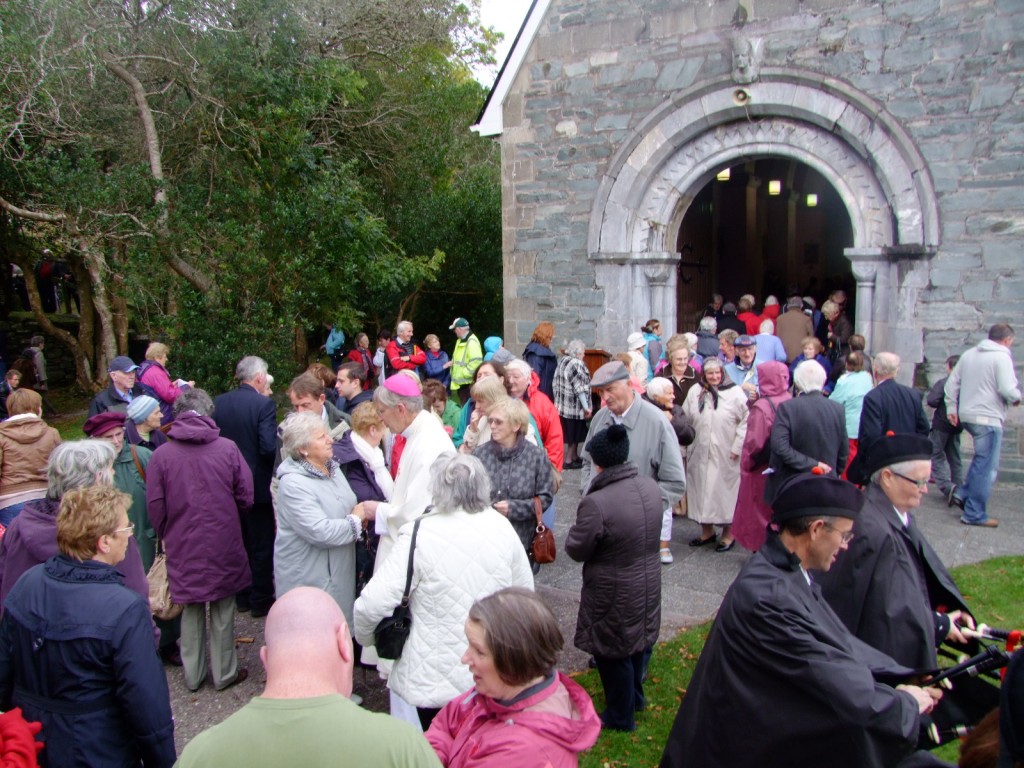
Kieran’s Our City, Our Town Article,
Cork Independent, 15 December 2011
In the Footsteps of St. Finbarre (Part 279)
A Golden Chain
“The monastery is enshrined deep in the hearts of the people of Cork. The historian and the archaeologist love the place, too, for its many interesting associations; while the beauty of the country attracts the general tourist. The changing hands of time have not been at rest during the twelve hundred years that separate us from St Finbarr. On the contrary, they have been increasingly active. Storms and revolutions have rolled over the land. The piety and learning, implanted here by Patrick and Finbarr, and the other saints and scholars of the fifth, sixth and seventh centuries, had to pass through the ordeal of fire and sword (Southern Star, 3 October 1914, p.3)
This article arose out of the above quote, that a place such as Gougane Barra has survived through many ages of turmoil; that there is one thing having a physical monument, but these monuments must also be invested with human thought them to make them relevant to people’s lives. Indeed, reading newspapers such as the Southern Reporter about the nature and content of the Gougane Barra ceremonies every September/ October for the twentieth century reveals one of the many ways to enter the ‘mindscape’ of Gougane Barra. One of the aspects that shine out is the stability of the site’s essence in a world of change.
For example in early October 1914 the message by local parish priest Fr. James O’Leary asked the people to respect those whom “God had given and who in a special manner evidenced the ordinances by raising up such saints as Patrick and the other saints who had done so much for religion in Ireland…it was the duty of us all to honour the saint [St. Finbarr], to emulate his example in order to share his glory”. But these messages are placed against what else was happening in the world. Reading the Cork Examiner in early October 1914, World War I was in its first year. In October, 33,000 Canadian troops departed for Europe, the largest force to ever cross the Atlantic Ocean at the time. Belgium fell to German troops.
Similarly, in 1941 during the time, when the German invasion of the Soviet Union was in full swing, in early October 1941, the Southern Star reports on the sermon of Rev. L. Kelleher of Farranferris, Cork City; he said that the ceremony was the “occasion for thanksgiving to God and St. Finbarr for the hermitage of faith and Catholic life in Cork City and County and intercession to God, and to pray for the spirit of St Finbarr, for the grace to good works and to pray in the spirit of St Finbarr and our Catholic fore-fathers. The solution of social evils and modern difficulties to our Catholic precepts, in giving full play to the principles of charity towards God and love for our neighbours”.
The Southern Star for 2 October 1954 (p.1) records Rev. C. Lynch, C.C. Inchigeela preaching in Irish and in English; “we have come in pilgrimage out of our sense of devotion to God and in revered memory of the man who chose this place for his cloister that he might be free from the turmoil of the world and commune in peace with his God, the very atmosphere of the lake and mountain breathe peace because the peace of God is here”. The sermon was pitched against the backdrop of the Cold War and negotiations across international media of the USA, Great Britain, France and USSR agreeing to end occupation of Germany.
Ten years later the Southern Star, on the 3 October 1964 (p.10) reported on the sermon of Rev. L. O’Regan, C.C., Ballingeary, who noted: “There is a golden chain linking our pilgrimage there today with life and times of Ireland’s Golden Age. This strong and ancient golden chair is unique in the annals of Christendom, and a source of admiration and pride to any Irish Catholic who pauses to consider it. There never have been any weak links in the chain that link us here today with the faith of St Finbarr”. During that month Martin Luther King was awarded a Nobel peace prize for his work.
This year on 25 September 2011 Fr. Donal Cotter at the ceremonies, I thought, gave a thought provoking sermon. He noted “Finbarr found in the nature of the place and in the nature of God a unique combination, a unique relationship where his restless soul could find a level of peace, but he was never sure when that restless soul was finding peace, because he kept travelling further on and back again. And because of that, that represents to me the idea that the soul never truly rests until it rests with God…So while he found rest here, his ultimate point was not found in this world, but in the next. We have come here today, always finding something here ourselves, whatever that may be, a moment of solitude, a prayer for someone who is unwell, because people do the rounds here for those, the ending of a long journey, the finding of something within yourself that will help you move on from here.”
To be continued…
Caption:
621a. Bishop John Buckley greeting pilgrims, Gougane Barra Sunday Ceremonies 2011 (Picture: Kieran McCarthy)
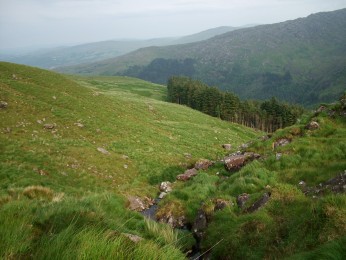
Kieran’s Our City, Our Town Article
Cork Independent, 8 December 2011
In the Footsteps of St. Finbarre (Part 278)
Creating Ireland’s First National Park
In 1960, the national element of Gougane Barra was once again invested in when it was chosen as Ireland’s first national park. In the late 1950s, plans were drawn up to open up some of Ireland’s particularly attractive forest blocks as national forest parks. Up to that point in time, investment in state forests amounted to £22.5 million. The investment aimed to achieve maximum utilisation of the land, that patches of land, which could not be used economically for pasture or tillage, could be be devoted to timber production The forestry division in 1963 provided direct employment for 4,500 men, 330 of whom were employed in Cork and Kerry forests. In 1963, the State planting rate was 25,000 acres per annum.
Apart from the economic advantages, the state also sought to improve local scenery affected by forestry plantations. In this light, it was decided to develop a number of national parks, providing new recreational facilities and contributing to the development of the tourist industry. Gougane Barra in Co. Cork and the Derrybawn and Lugduff properties of Glendalough were selected as the first two areas of development, or the Republic’s first forest parks. A grant was secured in September 1960 to create a new road into the heart of Gougane’s forestry scheme. The layout of the park officially began in late December 1961.
A journalist with the Irish Independent on 1 January 1963, (p.20) noted of Gougane Barra’s forestry:
“Up to recently, on the mainland, it was possible to drive only a short distance past the island. There the road ended. A narrow path continued for some distance towards the boundary of the forest nearly a mile away. It was here deep in the valley, that the forestry division of the Department of Lands began planting about 24 years ago. Today, the trees, including magnificent spruce, larch and silver fir, are tall and stately. It is here that the national park is taking shape.”
The idea of opening the forest to the public first was put forward by Colonel Roland H. Packwood who was engaged as a consultant to the Irish Forestry Division in 1937. He formed the idea from his experience with the British Forestry Commission, in which he served as Chief Engineer. As such he was responsible for the 400 forests in Britain, and when he retired he was invited to prepare a report on the afforestation needs of Ireland. For three years leading up to 1961, he visited Ireland and on one occasion suggested the idea of a national park to the Minister for Lands Mayo Fianna Fáil TD Micheál Ó Móráin. Colonel Packwood had also visited forestry areas in India, New Zealand and Australia. Full support was given by the Minister. In 1957 Micheál Ó Móráin was made Minister for the Gaeltacht. He was a native Irish speaker. He was appointed Minister for Lands by Taoiseach Seán Lemass, in 1959 and was re-appointed to the Gaeltacht portfolio in 1961. He remained in these two Departments until 1968.
Work in Gougane Barra began under the supervision of engineer Mr K McGarry, Mr Con Lynch, Divisional Engineer, Cork and Mr D. O’Driscoll, forester, Ballingeary. Construction of an 18 foot wide link road from Gougane Barra to the forest began early in 1961. Inside the forest, a circular loop road, over 2 ½ miles long was made. This was the difficult part of the project. The road in many places had to be cut out of rock using dynamite. By the time the road was completed, more than 10, 000 tons of rock and soil had been moved. All this had to be accomplished without major damage to valuable trees. At one point the road passes over two small streams, one of which comes down from Nead An Iolair, the source of the Lee.
A visit by the Irish Independent journalist in early 1962 noted of the area’s history:
“In a recent visit we left the unfinished road and climbed further up the mountain to a spot where one can straddle the famous river, one foot on each bank. This place has a niche on history too. The road at another point passes at the base of a deep ravine. It had been seen by few people because of it’s previous inaccessibilty. Known locally as Poll, or the Black Glen, it was used once by the West Cork Flying Column in their famous trek to avoid encirclement by British forces during the War of Independence. The column led by famed Tom Barry, was being confined in the valley of Coomhola on the Kerry side of the mountains. A British pincer movement was an all-out drive to smash the fighting men of West Cork. All escape routes were cut off. A local guide led the column in a night escape across treacherous, boggy land.”
Gougane Barra Forest Park was officially opened on 20 September 1966. The Irish Press reported of Micheál Ó Móráin, Minister for Lands, opening the forest park and sharing the news that new national forest parks were proposed for Glendalough, Co. Wicklow and at Lough Key, Co. Roscommon (see www.coilte.ie for more on these).
To be continued…
Caption:
620a. The ‘baby’ River Lee in Gougane Barra Forest Park (picture: Kieran McCarthy)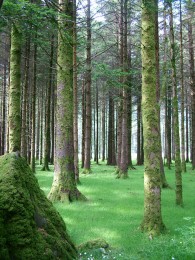
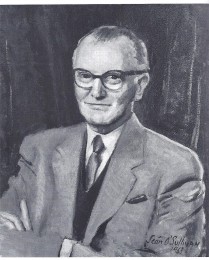
Kieran’s Article,
Our City, Our Town,
Cork Independent,
1 December 2011
In the Footsteps of St. Finbarre (Part 277)
Conversations in Irish Identity
“For the page has become dim. The rain has ceased. The clouds scurry from across the mountains, which are but dark outlines now. Saint Finbarr’s Lake is bright with the last reflected light. Much loath, I have lit a candle, and am, at once, as enclosed in my tiny house as a monk in his cell and all my senses reduced to one sense- hearing- the waterfalls on the hills, the flooded Lee, the sigh of the pines. A thousand years ago the hermit on the island of Gougane Bara heard the same lovely murmurings. I feel that I have travelled through time to his peace” (Seán Ó Faoláin, Sunday Independent, 18 August 1944, p.5)
It is difficult to view the extent of importance of a place like Gougane Barra and others in the evolution of ideas in shaping Irish identity. The site stands for many aspects of Irishness but also for the continuity of Irish traditions and values, all of which are also continually under attack. Travelling throughout the Lee Valley, traditions and values like in any other time, are under bombardment. In my own view their positive value or worth in society does need to be debated. Recently I came across an interesting article on Gougane Barra by Seán Ó Faoláin, which was published in 1944 in the Sunday Independent. Born in Cork as John Francis Whelan (1900-1991), as his pen name Seán Ó Faoláin he wrote his first stories in the 1920s. Through 90 stories, written over a period of 60 years, Ó Faoláin charts the development of modern Ireland. His Collected Stories were published in 1983.
Seán Ó Faoláin’s interests were broad. In his autobiography Vive Moi (1963) he was influenced by a number of themes such as the contribution of the Irish language and rural Ireland, the participation in armed struggle, and religion. They made a deep impression on him. Indeed his early work sought a new Ireland rooted in rural traditions and in the Irish language. In an interesting quote in his autobiography Vive Moi (1963, pages 141-42) he criticises the collective ambition not to have an interest in the Irish language:
“Nowadays, the learning of Irish has lost this magical power to bind hearts together. It has lost its symbolism, is no longer a mystique…today we are not in the least concerned with translating the aspirations of those days into reality…there has been a shift of ambition…the younger men…want a modernised country, prosperity, industrialisation, economic success. These ambitions have, for years, been demolishing the bridge with the past, stone by stone, until, inevitably, the Irish language, which is the keystone of the arch, will fall into the river of time. With it the life procession from the past into the present will cease”.
Ó Faoláin’s work is vast but there is a search in his work to discover the universal in the Irish experience. During his career he was as the centre of the national dialogue about what sort of nation Ireland should be. With an enormous interest in heritage, he drew his inspiration from it. He writes about all classes and professions of Irish society working class, priests, businessmen, politicians, civil servants, doctors. He aimed to show the various types of the Irish character, that these characters of Ireland are worth a study. Indeed in an attempt to understand the forces that shaped Ireland, he wrote a number of imaginative biographies of historical figures, most notably, of Hugh O’Neill and Daniel O’Connell.
In his book The Irish: A Character Study (1947), he noted that “History proper is the history of thought”. He pitched the content of the book in what successive peoples and particular events had brought to the creation of modern Ireland, and omitted the as he deemed it the “tiresome” material of histories- invasions, reigns, parliaments, dynastic risings and fallings.
One of his stories, The Silence of the Valley, is set in Gougane Barra, and appeared in his book, Teresa and other Stories. In the story, four visitors comprising an American serviceman, a practical Scotswoman, an “incorrigible Celt”, and an inspector of schools are staying at a fishing hotel in the valley. There they are being entertained by a “jolly, eccentric priest and a singing tinker”.
The visitors bring the concerns of the modern world into what Ó Faoláin notes a “rural haven”. The American wants the hotel run more efficiently. The Scot sings the praises of such “pockets of primitiveness” while enjoying “cigars and whiskey in the bar” and the Celt desires a marriage of technology and rural life. They all fish and swim in the lake but their “chatter” shows that they have a superficial awareness of their surroundings. It is the priest who first “hears” the silence when he is called away to visit an old woman whose husband, a cobbler and a renowned storyteller of the region has just died. The silence represents according to a critic of Sean’s work Pierce Butler, the presence of the past, the mystery of the unknown future, the continuity of the tradition represented by the cobbler and sensed by others- all important values that are bound up with this part of the Irish landscape.
To be continued….
Captions:
619a. Portrait of Seán Ó Faoláin, 1963 by Sean O’Sullivan
619b. Seán with family, touring West Cork in 1946 (source: Maurice Harmon’s book Seán Ó Faoláin (1994)
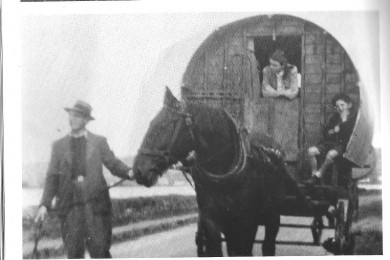
Motion:
In light of the recent tragic death of a pedestrian on Parnell Place, that the safety of pedestrians crossing from Merchants Quay to the Bus Station be examined and reconfigured as appropriate with safety barriers etc. (Cllr K McCarthy)
Recently I had the pleasure of officially launching the new voiceworks studio on the North Mall. Well done to Laoise O’Hanlon and Gemma Sugrue.
VOICEWORKS STUDIO is coming to Cork city!
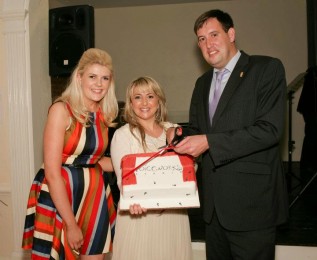
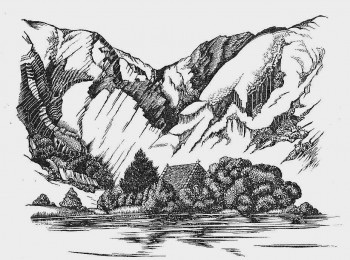
Kieran’s Our City, Our Town Article,
Cork Independent, 24 November 2011
In the Footsteps of St. Finbarre (Part 276)
Gliding on the Willow
With tourism numbers rising and forestry growing, the magic of Gougane Barra continued to capture many writers and painters in the first half of the twentieth century. The Southern Star on 16 April 1949 (p.4), tells of Robert Gibbings (1889-1958), Cork author, artist and lecturer, arriving in Cork from London to begin a new book on the lines of “Lovely is the Lee”, which he wrote some years previously, and which was the “book of the month” in the United States, where half a million copies were sold.
Robert got sidelined in his first River Lee book called Lovely is the Lee (1945). He had intended originally to devote the work to Galway and Connemara waterways but the material eventually was incorporated in a book to which the River Lee gave its name. Arriving back in 1949, Robert Gibbings told a journalist that he would remain at Gougane Barra and would move around south west Cork and West Kerry gathering material for a new book on the region. Hence he purchased a delivery van which he converted into a caravan and in which he lived whilst writing it. For the greater part of the next two years he would live in Ireland, with occasional visits to London. He brought with him the boat, which he used on the Thames when writing “Sweet Thames Run Softly” (1940), for use on the lake at Gougane Barra.
In chapter eighteen of Sweet Cork of Thee (1952), he writes of his boat (p.143):“Early in June, the boat, the willow, arrived…my favourite place on the lake during the day was at its far western end, where behind a screen of rushes I could float unobserved, writing or drawing. There the water was shallow, and looking into it I could see below me the matted leaved of water lobelia. They were already sending up flower stems, and soon their pale lilac blossoms would be as a mist over wide stretches of the lake”.
Robert Gibbings was the son of the Rev Canon Edward Gibbings, Rector of Carrigrohane. Robert attended University College Cork, and later moved to London. He travelled extensively in France, Germany, Italy, West Indies, Australia and the Pacific Islands. After his visit to the latter, Robert wrote “Over the Reefs” (1948). Another of his books at that time to achieve great popularity was “Coming Down the Wye” (1943). Several distinctions came his way in 1938 he was made an M.A. Honoris Causa of the National University of Ireland, and as well as that he gained many medals and certificates from London University and other institutions and exhibitions. In the 1950s he did several broadcasts in the BBC Overseas Service.
On his second book entitled “Sweet Cork of Thee”, a journalist with the Southern Star on 30 June 1951, p.7 noted; “he is concerned almost entirely with Co. Cork, and his friends and adventures during the happy months he spent in his motor caravan, with Gougane Barra as his headquarters. He has a real genius for discovering odd charters and for gaining the confidence of everyone he meets. He can tell a story with a fine economy of words, and his own descriptive writing is as sensitive as his engravings…he shows a superb artistry in his glimpses of lakes and trees, and especially in the exquisite drawings of birds or flowers or fishes, or any other curious object that takes his fancy”.
After two years fieldwork for the second book, an article appeared in the Southern Star on 7 April, 1951 (p.6). A journalist wrote: “A letter from Mr. Robert Gibbings in London tells me that he has just finished the last engraving for his new book, which is to be a sequel to his “Lovely is the Lee”. Many people will remember his protracted visit to County Cork last summer… Most of his books have had titles taken from familiar songs concerning places and rivers. It is scarcely necessary to say that this time he is quoting from Father Prout’s verses on the Shandon Bells: On thee I ponder, where-er I wander, and thus grow fonder, Sweet Cork, of thee”.
In Robert’s obituary in Irish Independent, 21 January, 1958 (p.10), the journalist noted: “Mr. Robert Gibbings, the bearded Irish author and artist, who has died at Long Wittenham, near Abington, Berkshire, U.K. at the age of 68 for a long time occupied a place of distinction among wood-gravers, and for some 10 years, during the boom in fine books, directed the Cockerel Press, which in its day brought out a number of beautifully illustrated editions, laid out and printed with every refinement of taste. He was a moving spirit in the foundation of the Society of Wood Carvers. He claimed to be the first artist to make pencil drawings under the sea when, in Bermuda in 1938, he drew on roughened celluloid sheets 20 feet under water. In 1958, his engravings were in the British Museum and Victoria and Albert Museum…He also designed the first greetings telegrams for the post office.” David Attenborough remembers Robert Gibbings as being one of the inspiring influences at the start of his career.
To be continued…
Captions:
618a. Sketch of Gougane Barra by Robert Gibbings from his book Lovely is the Lee (1945)
618b. Sketch by Robert Gibbings of reeds in Gougane Barra lake from his book Lovely is the Lee (1945)
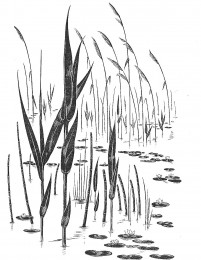
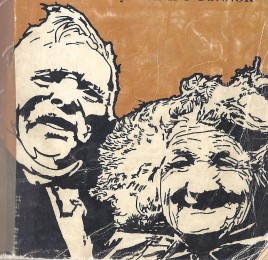
Kieran’s Our City, Our Town,
Cork Independent, 17 November 2011
In the Footsteps of St. Finbarre (Part 275)
The Golden Landscape
Amidst the creation of an afforestation programme for Gougane Barra, the site also began its association with a number of writers, which were mentioned by several people I interviewed during my recent photographic exhibition set-up.
Many visitors to the pilgrimage island mentioned the contribution of the Eric Cross and the story of the Tailor and Ansty. In the Irish Press on 6 September 1980 (p.5), the obituary of Eric Cross is outlined as historian, inventor, sculptor, philosopher, mathematician, teacher and research chemist. Born in Co. Down, Eric Cross spent his childhood there but later moved to the north of England. His father was in the British diplomatic service and his mother, whom he once said had a very great influence on him, had gone to South Africa as a volunteer nurse in 1900.
Eric went to study medicine in Manchester University but after six months he transferred to London where he studied and became a chemist. He spent 15 years as a research chemist in London. He came to live in Ireland in 1936. On his arrival, he renewed an acquaintance with Fr. Tim Traynor, a curate in Sandycove. Fr. Traynor also knew the Tailor in Gougane Barra. In 1939 Eric came to Cork and became part of a group, which included Seamus Murphy, the stone mason and sculptor, Nancy McCarthy, another chemist from Douglas, Captain Seán Feehan, the founder of the Mercier Press and Father Tim Traynor. Gougane Barra was frequented by the group, who were drawn to it by the famous couple Timothy and Ansty Buckley known as the Tailor and Ansty. Later Eric Cross purchased a horse drawn caravan and moved it to Gougane Barra in West Cork.
In an interview in 1976 Eric Cross recalled his first meeting with the Tailor in Gougane Barra. “I was in Cork City and I hired a bicycle and set off, it was a fine summer’s day and by the time I got as far as Gougane Barra it was getting dark. I met the Tailor on the way. He was sitting on the side of the road outside his cottage. He asked me in for a heat of the tea. Something drew me to him, the broadness of the man must have impressed me in some way. It is very hard to put a word on it but I had a sort of feeling that I knew him”.
The Tailor and Ansty was a result of Cross listening many nights to the Tailor’s stories. It was published in 1942, and a hail of condemnation descended on Cross. The book was debated for four days in Seanad Éireann in 1943 after Sir John Keane tabled a motion condemning the censorship board for banning it. When Sir John Keane insisted on quoting from the book, one senator ordered the quotations to be stricken from the record in case “pornographers might get their hands on them and peddle them in the marketplace.”
In a letter to the editor of the Irish Press, published on 15 October 1942 (p.3), Eric Cross defended the book:
“I wrote the book, ‘The Tailor and Ansty’, about a man who has been my friend for many years. The manuscript, before publication, was read by many other friends of the Tailor. When published it was received with gratitude by them and was reviewed enthusiastically by every Irish paper without any exception or objection. Last week the book was placed on the list of banned books by the Board of Censorship. Having stood the test of test of acceptance by the many of who are friends of the Tailor and the Press of Ireland. I must protest against the inference created by this ban-that I have misused the friendship of a great man for the writing of a book ‘the general tendency of which is indecent’. In this I believe that I have the concurrence of opinion of the Tailor’s many friends who would immediately and before publication, have resented such a portrayal”.
In his introduction to the reprint of the book in 1964, Frank O’Connor noted: “Tis a funny state of affairs when you think of it. It is the Tailor himself speaking. The book is nothing but the fun and the talk and the laughter, which has gone on for years around the fireside”. The Tailor and Ansty was the first book, eventually, to be “unbanned” in Ireland.
In 1966, the historian in Eric Cross showed itself when he brought out a “Map of Time”. The map shows at a glance the main events and people of Irish history and their time in relation to European events. In time, Cross went on to write over 200 radio talks for RTE’s Sunday Miscellany and contributed short stories to the BBC. His interest in philosophical and mathematics prompted him to write a number of essays, which were unpublished. In 1978, a book of short stories, “Silence is Golden and Other Stories”, was Cross’s last publication. Eric Cross lived in Cloona Lodge, near Westport, Co. Mayo, the home of the Kelly family for the 27 years leading up to his death in 1980.
To be continued…
Captions:
617a. Depiction of the Tailor and Ansty (source: from a 1985 reprint of the book)
617b. Eric Cross (source: Irish Press)
